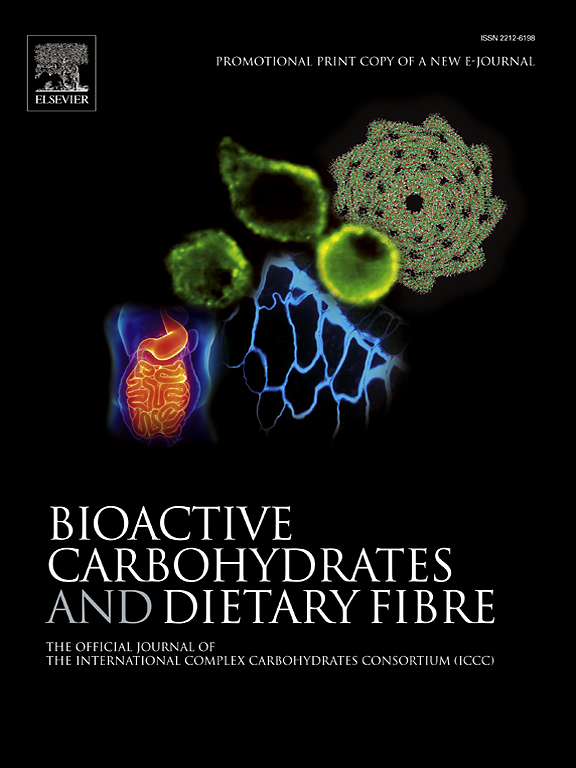Effects of different proteins on the structure and digestibility of complexes extruded with high amylose maize starch
IF 3.6
引用次数: 0
Abstract
High amylose maize starch is a natural maize starch with an amylose content exceeding 50 % of the total starch. It has garnered attention for its green health benefits and widespread industrial applications. The purpose of this research is to explore the effects of different proteins on the structural properties, physicochemical properties, and in vitro starch digestibility of complexes extruded with high amylose maize starch. We use proteins (soybean protein isolate, wheat gluten, rice protein) and high amylose maize starch in co-extrusion. Extrusion significantly disrupted the microstructure of the starch granules, leading to protein denaturation, starch gelatinization, and crosslinking, forming a dense particle structure. Experimental results indicated that co-extrusion led to a transformation of the starch crystalline structure to a B + V type. The complexes formed with wheat gluten had a higher relative crystallinity, greater short-range order, and higher double-helix content, with smaller molecular volumes. The structure of the complex was more uniform, and the molecular size was more consistent. This compact structure helps resist the penetration of water and amylase, resulting in a gentler digestion curve, which promotes the slow release of glucose, making it more suitable for low GI foods.
不同蛋白质对高直链玉米淀粉挤出复合物结构和消化率的影响
高直链淀粉是一种直链淀粉含量超过总淀粉50%的天然玉米淀粉。它的绿色健康效益和广泛的工业应用引起了人们的关注。本研究的目的是探讨不同蛋白质对高直链淀粉挤出配合物的结构特性、理化特性和体外淀粉消化率的影响。我们使用蛋白质(大豆分离蛋白,小麦面筋,大米蛋白)和高直链淀粉玉米淀粉共挤压。挤压明显破坏了淀粉颗粒的微观结构,导致蛋白质变性、淀粉糊化和交联,形成致密的颗粒结构。实验结果表明,共挤压导致淀粉晶体结构向B + V型转变。与小麦面筋形成的配合物具有较高的相对结晶度、较高的短程有序度、较高的双螺旋含量和较小的分子体积。配合物的结构更均匀,分子大小更一致。这种致密的结构有助于抵抗水和淀粉酶的渗透,导致更温和的消化曲线,促进葡萄糖的缓慢释放,使其更适合低GI食物。
本文章由计算机程序翻译,如有差异,请以英文原文为准。
求助全文
约1分钟内获得全文
求助全文
来源期刊

Bioactive Carbohydrates and Dietary Fibre
Agricultural and Biological Sciences-Food Science
CiteScore
6.00
自引率
0.00%
发文量
38
期刊介绍:
 求助内容:
求助内容: 应助结果提醒方式:
应助结果提醒方式:


